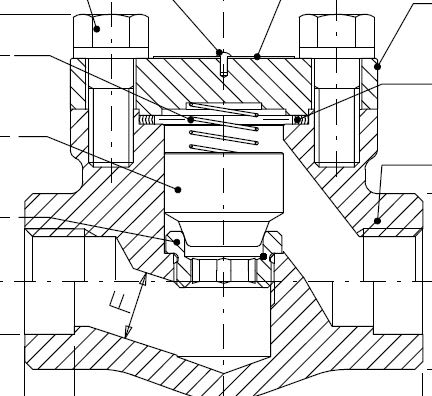pnrngv
Mechanical
- May 26, 2019
- 17
thread378-124275
Hi,
There is a Check Valve installed in the discharge side of the reciprocating pump in the Chemical Injection Package. Working and Stand-by Pumps are connected to common header. During FAT of the packages, when testing the scenario of switching from Working (Pump A) to Stand-by pump (Pump B), we noticed a reverse flow passing through the Check valve of the (Pump A). Back Pressure is created through Regulator for testing.
Check Valve Type - SW 800 Pound rating Lift Type. (All are SW piping circuit)
Discharge pressure of the Pump is 65 PSig.

Valve vendor responded as below
"Quote : "Vendor tested this valves according to the applicable pressure class (800) that mean 150 bar...The main problem is that you are using this 800 class valves for a different purpose. The sealing surfaces design for a class 800 (150 bar) is different than a sealing surfaces design for 4.48 bar (65 PSI). If you need valves for low pressure you need to order a different design"
Unquote:
Please suggest,
1. What is the best valve type for the application ?
2. Any solution on the same lift Type Check valve installed ?
Hi,
There is a Check Valve installed in the discharge side of the reciprocating pump in the Chemical Injection Package. Working and Stand-by Pumps are connected to common header. During FAT of the packages, when testing the scenario of switching from Working (Pump A) to Stand-by pump (Pump B), we noticed a reverse flow passing through the Check valve of the (Pump A). Back Pressure is created through Regulator for testing.
Check Valve Type - SW 800 Pound rating Lift Type. (All are SW piping circuit)
Discharge pressure of the Pump is 65 PSig.

Valve vendor responded as below
"Quote : "Vendor tested this valves according to the applicable pressure class (800) that mean 150 bar...The main problem is that you are using this 800 class valves for a different purpose. The sealing surfaces design for a class 800 (150 bar) is different than a sealing surfaces design for 4.48 bar (65 PSI). If you need valves for low pressure you need to order a different design"
Unquote:
Please suggest,
1. What is the best valve type for the application ?
2. Any solution on the same lift Type Check valve installed ?

